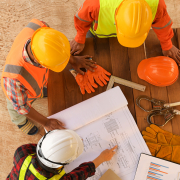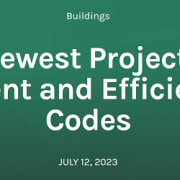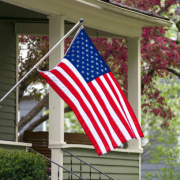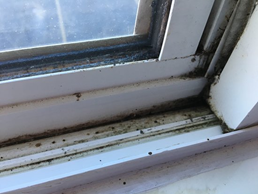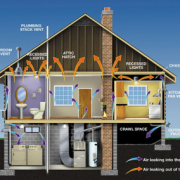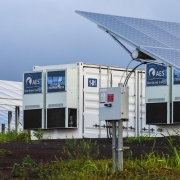written by MEC’s Buildings Department program manager, Mary English
On January 5th, 2023, Kansas City’s largest utility, Evergy, announced plans to update the Hawthorn coal-burning power plant with a solar field1. This will be a 10-MW solar array which on average can power roughly 2,000 single family homes a day. This move is seen as a hopeful sign for activists pressing for Hawthorn’s closure.
This a textbook example of the term that has been gaining traction in recent years: environmental justice. The plant’s potential closing, if it happens down the road, falls right in line with the Environmental Protection Agency (EPA) definition which in brief is: “the fair treatment and meaningful involvement of all people regardless of race, color, national origin, or income with respect to the development, implementation and enforcement of environmental laws, regulations and policies.”
The Hawthorn plant is located next to neighborhoods with lower incomes who have borne the brunt of power generation and other industries’ negative impacts on the metro’s air quality. There is much more work like this in our region and around the country that needs to be done. (For a fantastic, if irreverent, report on some other examples of environmental justice wins and losses see the Last Week Tonight with John Oliver episode broadcast in May on this subject 2.)
However, as I like to say, these are “no-brainer” examples of immediate changes needed for a more fair and just society for our entire region. There are many other ways our fellow residents suffer from environmental injustices, however, that are hidden from view from those not directly involved in this subject through work or activism.
One such example presented itself in a recent policy argument in one of the cities that make up our metropolitan area. And as our metropolitan’s city-center – Kansas City, MO – is in the middle of a similar policy discussion currently, I want to talk in more detail of how this is relevant to the discussion over environmental justice.
I’m talking about the policy decisions over upgrading building energy codes. Kansas City, KS, just passed a “new” energy code. New being in quotation marks because—due to the residential portion of the codes passage being heavily amended—it’s safer to classify it as “Meet the New Code, Same as the Old Code.”
Recently I discussed the many ways better energy codes positively impact our work and home lives 3. Since writing that piece, Kansas City, KS, decided to punt any marked improvement to their residential energy code, taken from the 2018 iteration of the International Energy Conservation Code 4 (IECC) (fortunately, the amendments in the commercial code were removed).
Their reasoning was based on the fear-based excuse that it will price lower income earners out of buying a home. (Since both Missouri and Kansas are on the “home rule” law, every city council in our metro area is in charge of picking their own building codes. Currently, better mostly unamended 2018 IECC codes have not produced this problem in both Columbia, and St. Louis, MO. New-home building permit-pulls in both of these cities have risen since the codes’ passages, in fact 5.) This argument, however, is prevalent; and can be a winner with policymakers because it packs an emotional punch related directly to the American Dream.
I want to expand on this idea. The American Dream as defined by this reasoning is all about owning your own home, apparently, even if said home is built with out-of-date technology and therefore not as durable, comfortable, and healthy as it could be for the residents. The code that Kansas City, KS, just passed, like most of the rest of our metro area’s cities, is based on a home-building process that is decades old. Following this argument that everyone should be able to buy a house, why don’t we just throw up some wood slats and tar paper like they did in the olden days and call it good?
We don’t, of course, because it’s a ridiculous notion. Updating the energy code incorporates what we know now about how building efficiency is connected to human health and mental well-being. It’s not enough just to have four walls, a ceiling and roof and call it good. We must make sure that our structures are not also making us sick and poor. As humans have made great technological advancements over the last 100 years, we’ve incorporated them into minimum building standards as part of the social contract with the citizenry.
And that—the social contract—is really what Environmental Justice means to me: keeping this important contract up to date and fair for all. When people are driving over our bridges, riding roller coasters, eating packaged food, just to list a few, they are doing so with the understanding that the laws protect them from injury or death. (And yes, bad energy codes in the most extreme examples can lead to both of these things 6)
Environmental justice means that the social contract should apply to everyone—not just those that can afford a custom-built home that fixes all the flaws contained in the current energy code in our region. Roughly half of our residents are renters. Don’t they deserve a home that isn’t prone to mold growth and discomfort due to poorly installed insulation and insufficient ventilation?
And if you want to argue that home buyers matter more for some reason, then why should they be subject to buying a “ready to wear/ off the shelf” new home that has been built with out of date and flawed technology? People don’t generally think about the health and safety aspects of homebuying because they assume policymakers and administrators have their backs covered in relation to the boring stuff.
And yes, insulation and air sealing are boring. As an industry professional for 15 years, trust me, I get it. I have audited hundreds of homes in this metro area—many built under the same old technology that is still alive and well in most of our townships—to have just a small portion of homeowners follow through and pay to upgrade their houses. They’d rather have new kitchen cabinets or light fixtures. A home is an emotional extension of ourselves and most of us have only so much money to spend on upgrades. Insulation is going to be picked last if the house is seemingly livable enough with a few space heaters and added blankets in the TV room.
For families with children that suffer from childhood asthma caused by energy inefficiencies, however, and who don’t have the means to choose from a list of home upgrades, where is their signed social contract to the American Dream?
It could be right here in Kansas City if we had the will to implement solutions for our buildings’ occupants. As I type this, the news that a new climate mitigation spending package may finally be put before Congress for passage has broken. It includes the largest climate action spending in American history. This is great news for our cities that are trying to right the wrongs of discrimination, inequity in our infrastructure spending, and neglect of previously redlined neighborhoods in general.
With this funding in mind, here is my dreamed-up short list of solutions:
- KC area municipalities should all pass at a minimum the unamended 2018 IECC or, better yet, 2021 commercial and residential codes.
- Implement a minimum energy performance standard for our commercial buildings 7 —including multi-family residential—with a deadline to reach a threshold of energy performance.
- Create a funding process to help homeowners with lower incomes spend money on the boring stuff like insulation, air sealing and better HVAC systems. Additionally, this process should be kept simple and accessible (too many of these types of programs in the past haven’t been.)
- Modify any tax laws to eliminate gentrification or landlord abuse through raised rents, as money gets poured into revitalizing previously neglected communities.
- Indirectly related: increase the minimum wage to something to live on with dignity and respect in a 40-hour work week.
- And, finally, invest in jobs training to create a work force that can be there to do all the work contained in the above solutions.
When 2020 was upon us in full force and we all went indoors to sequester ourselves to work and live 8 we were experiencing a what is called a collective trauma. Many of us lost loved ones. And there was a window into our fellow humans’ suffering and those whose situations were worse – or better off – than our own.
But there was a sense that we were entering a new era for the better perhaps. Our offices closed, pollution dropped and you could actually smell the fresh change in the air. The conversation around buildings turned to health, building management, and ventilation.
That time has come and gone unfortunately as we’ve been pushed back into business as usual. The deep class divide remains unchanged and buildings are just one way that divide manifests. Energy code will not impact the ability to own a home. It impacts the ability to live and work in a healthy environment though.
Kansas City could be a leader among cities on how to update the social contract with its citizens by offering better buildings, which goes along with cleaner power generation, infrastructure, and thus cleaner air.
To me, that means Environmental Justice really can just be called Justice. Living with decent, healthy and equitable shelter should be considered a civil right, in my humble opinion.
But what does “Environmental Justice” mean to you?
Update: note that an earlier version of this blog incorrectly stated that Hawthorne plant was being shutdown by Evergy. This was inaccurate. It is a plant that environmental justice advocates have been requesting get on the list of plants to be closed. The solar array that Evergy is building is next to Hawthorne, but it does not preclude Hawthorn from being close permanently.
Footnotes
1 https://www.powermag.com/evergy-to-build-solar-array-at-kansas-city-coal-power-plant-site/
2 https://www.youtube.com/watch?v=-v0XiUQlRLw
3 https://metroenergy.org/2022/06/energy-codes-for-our-future/
4 https://codes.iccsafe.org/content/iecc2018
5 Public data received from codes departments in these cities.
6 https://www.nbcnews.com/news/us-news/families-sue-buildings-owners-bronx-fire-killed-17-people-rcna15384
7 https://www.imt.org/st-louis-passes-first-building-performance-standard-in-the-midwest/
8 Well…not all, some of us were luckier than others. Our healthcare providers and grocery store labor to name two—who kept up their end of the contract by working through brutal shifts and dangers to their health pre-vaccine—didn’t get to shelter in place. But that is another, albeit related, blog


